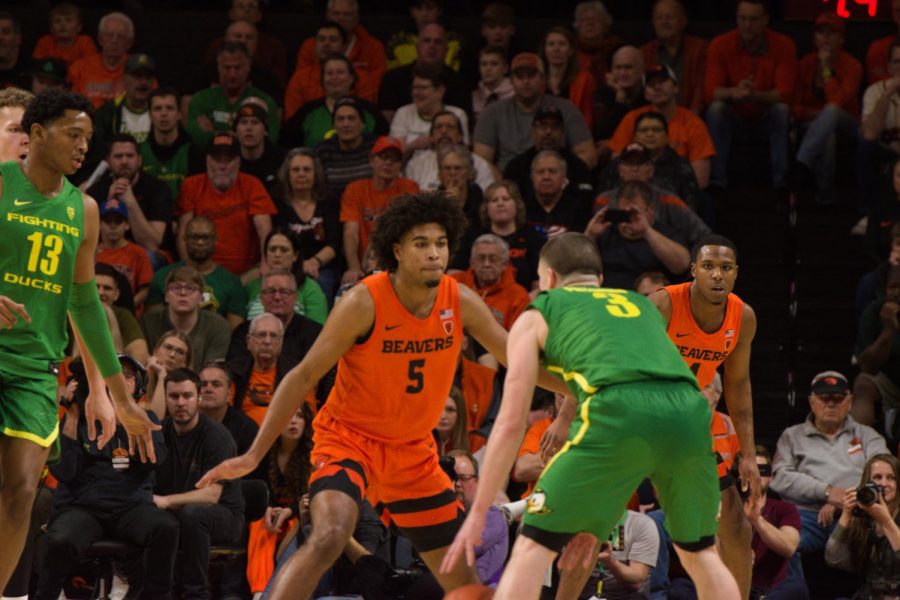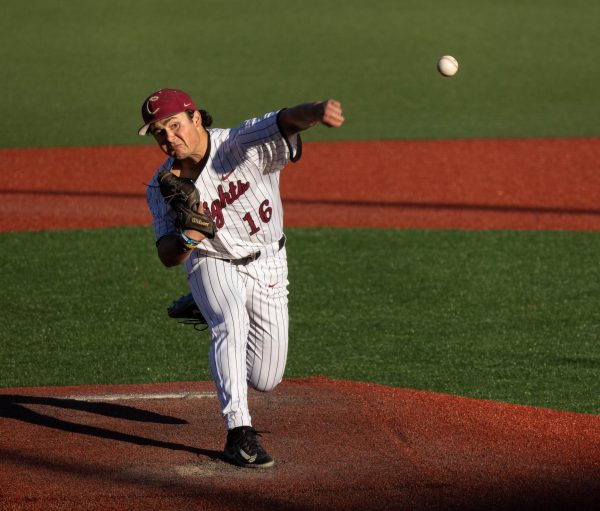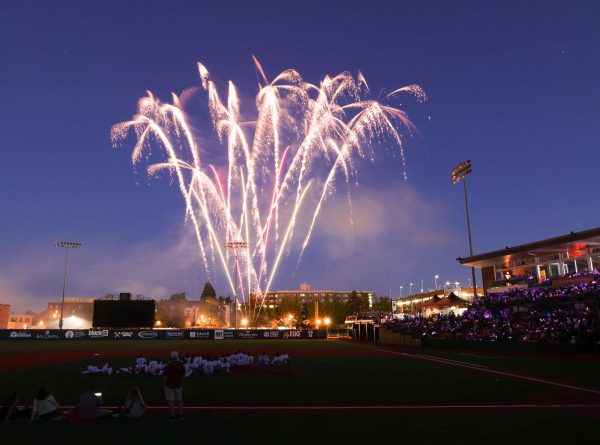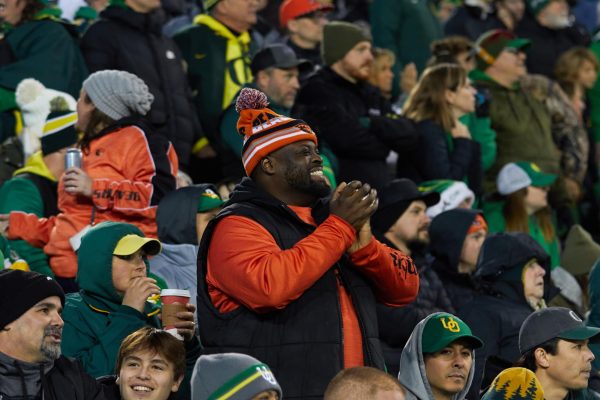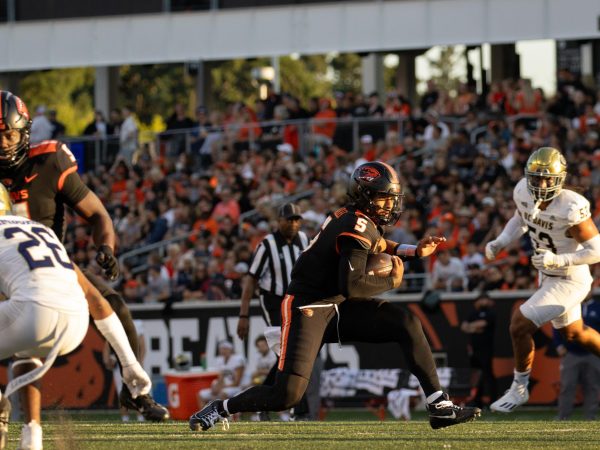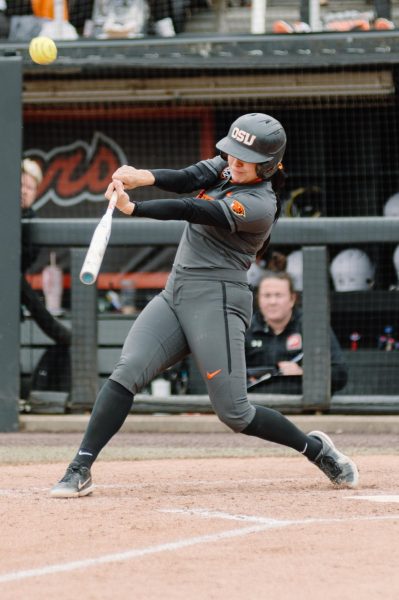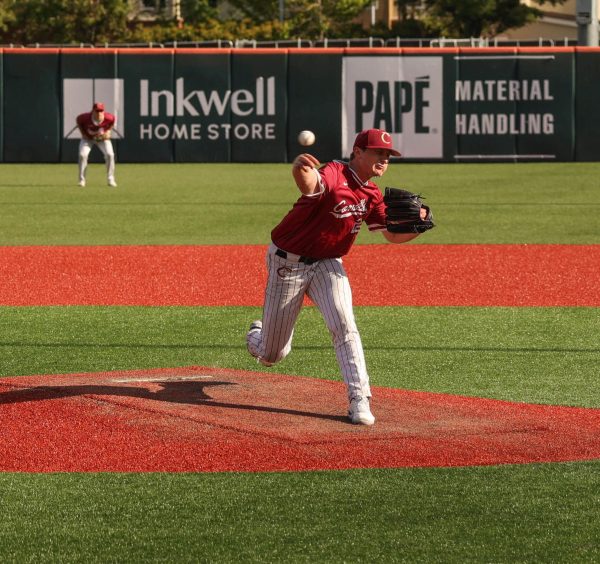A rivalry without a name, but a big history
March 1, 2021
Students at Oregon State University know they’re supposed to hate the Oregon Ducks, that’s just how things are, the natural order of things.
But why is that the case? Where does the hate come from? Part of it stems from over a century’s worth of history between these two schools.
The rivalry, which as of now is officially called “The Oregon State-Oregon Rivalry Series is presented by Safeway-Albertsons, Spirit Mountain Casino, PacificSource Health Plans, Your Local Toyota Dealers and First Interstate Bank” according to the Oregon State Athletic Department, has existed since 1894, when the two school’s football teams met for the first time.
Of course, things were much different 127 years ago, including names. The rivalry meeting was originally titled the Oregon Classic at the time, although sometimes also referred to as the State Championship Game.
Even the two participating teams went by different names at the time. The Oregon State Beavers were the Oregon Agricultural College Aggies at the time, while the Ducks were known as the Webfoots.
As to why this rivalry came to be, Terry Baker, who went to Oregon State from 1959 to 1963 and was the Beavers’ only ever Heisman Trophy winner, explained it succinctly.
“It’s a good rivalry,” Baker said. “When there are two major universities in a state, it’s naturally going to be a rivalry.”
With the schools sharing state borders, it might have been inevitable that the rivalry would come to be. But as the rivalry stuck around year after year, the two participating schools continued to evolve.
Over time, the OAC Aggies slowly completed their name change part by part into the OSU Beavers by 1961. In the meantime, it was the Oregon State Agricultural College in 1927, Oregon State College in 1937, and finally, Oregon State University by 1961.
The Aggies turned into Beavers in 1916 at the behest of the press, with the name being based on the beaver being the state’s official animal and the school’s famous engineering pedigree, since beavers are nature’s engineers. But even while being named the Aggies, the teams were often referred to as the Orangemen once the orange uniforms were adopted.
Meanwhile, Oregon officially adopted the nickname Ducks in 1978 after using it together with Webfoots for years.
In the midst of change at a university level, the name of the rivalry was changing as well. The Oregon Classic began to be referred to as the Civil War in the 1930s. Traditions that began in this time period often have origins that are hard to pinpoint, but what is known is that the name was first mentioned in newspapers before the 1929 rendition of the football game. By 1937, the name was widely used by both the press and the teams.
Why the Civil War name came to be is harder to determine, but it likely refers to the two teams being the two biggest fanbases in the state, and thus splitting the state into a civil war, a term which means a war between groups within the same state.
However, in the United States, the term is connected to the war over slavery in the country. Thus, the Civil War name was then dropped in 2020 after concerns about the implications of the name were brought up by former students, athletes and community members.
“Changing this name is overdue as it represents a connection to a war fought to perpetuate slavery,” said then-Oregon State University president Ed Ray in an email statement to the Oregon State community. “While not intended as a reference to the actual Civil War, OSU sports competition should not provide any misconstrued reference to this divisive episode in American history.”
No new name for the rivalry has yet been announced, with the aforementioned Oregon State-Oregon Rivalry Series and its sponsors serving as the current official name with no timeline for a change according to the Oregon State Athletic Department. Fun new name ideas abound online, but for the time being, nothing is set to come of it.
Despite all the name changes though, the one constant has been that these two schools play each other whenever they can, and they play a lot.
In college football, they’re the fifth most-played rivalry ever with 124 meetings between the teams, with the Ducks leading the series with a 66-48-10 record. In men’s basketball, the rivalry is even more historic, with the 355 meetings between the two teams being the most in the sport. Oregon State leads that series 191-164.
Other sports also have notable histories between the two programs. In women’s basketball last season, both teams faced off while ranked in the top 10 of the AP Poll for the first time, leading to sellouts in both arenas and tickets priced at over 500 dollars, figures reminiscent of the Duke Blue Devils and North Carolina Tar Heels rivalry on the men’s basketball side of things.
In baseball, the success of the Beavers in the 2000s and their two national championships in 2006 and 2007 is believed to have led to the Ducks reinstating their baseball program in 2009—so that Oregon State would not be the only ones having fun within that sport.
The two schools even have competitions outside of the athletics realm, such as measuring which school’s students recycled the most in the Campus Race to Zero Waste event. Oregon State won in 2020 by recycling over three pounds more per student over the year.
Yet, despite their history, the intensity of the rivalry might actually be a recent phenomenon. Baker said in his time, his football and basketball teams gave the games versus Oregon the same energy they would in any game.
“I was recruited by Oregon as well as Oregon State,” Baker said. “A lot of my friends went to Oregon, kids on my high school team. So it wasn’t like I had [a] hatred for them like some people get. It was a big game whenever we played them in any sport and you know, you wanted to beat them, but you want to beat whoever you’re playing. It wasn’t any bigger than playing Washington [Huskies] in my view, but other people have different attitudes on it.”
Baker added that he thinks now the games are a bigger deal for the players and fanbase at Oregon State though. Since Oregon alum and Nike founder Phil Knight has become a big booster in Eugene, the Ducks have become dominant in the rivalry.
“I think in recent times, I hate to say this, but Oregon has kind of dominated Oregon State,” Baker said. “It’s a big thing, now, if Oregon State can beat Oregon. I think it’s a real motivation because it improves the look of our program. So they’re going to give it 110% rather than 100% [like my teams].”
This change that Baker noticed can be seen in more recent players, such as Aleah Goodman, a current senior guard on the women’s basketball team.
“I knew about [the rivalry] a lot, you know, growing up watching both basketball teams, football, baseball, just all types of sports,” Goodman said. “I’ve been around this rivalry a lot. I remember going to school and having people be like ‘Hey, who [are] you going for this year?’ You got Oregon-Oregon State. Just a constant question every year, every time one of these games came up. It was just a huge game in every sport so that’s always fun.”
The women’s basketball rivalry that Goodman is a part of directly has been one of the more higher-profile meetings between the schools as of late, which could possibly be adding to the mood around the rivalry as a whole.
“I think what these two programs have been able to do, especially being from the same state, 45 minutes apart. What the two programs have been able to do just in women’s basketball as a whole is really special,” Goodman said. “I think that just brings a whole new level to this rivalry.”
Yet, it could prove difficult to build the rivalry back up to a national level without a recognizable name. The most well-known rivalries in the sport have unique names that bring up memories of who the teams are and their great matchups immediately for sports fans. The Iron Bowl. The Apple Cup. The Holy War. The Red River Showdown. Clean, Old-Fashioned Hate.
The Oregon State-Oregon Rivalry Series is presented by Safeway-Albertsons, Spirit Mountain Casino, PacificSource Health Plans, Your Local Toyota Dealers and First Interstate Bank doesn’t quite roll off the tongue in the same way.
As seen by the history of this rivalry itself, names change, and that’s okay. The name of the rivalry has adapted in the past, and now finds itself in need of a new moniker.
In the past, names for the rivalry and for the teams themselves have originated in the press, and maybe it should again. One possibility, courtesy of OMN Sports, is to rename this rivalry to the Platypus Cup. The trophy for the football game, although often forgotten and lost, is already a platypus, an animal that has a beaver tail and a duck beak.
The Beavers and Ducks mascots are unique, and they blend together into another unique animal. Embracing the name could prove to be catchy and recognizable.
The rivalry between the two schools is historic, spanning multiple centuries and sports—and could have a name that isn’t generic.












































































































